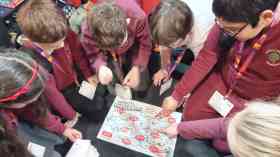Action Mats create resources for primary and early years children focussing on movement skills and active learning.
Supplier Focus
Latest Supplier News
Borg & Overström is a UK manufacturer of premium drinking water solutions. For over 20 years Borg & Overström has developed sustainable, bottle-less, hygienic, drinking water dispensers with the aim to provide exceptional, safe, self-service drinking water into schools, universities, workplaces and communal spaces.

 With the launch of free school meals for all infants last September, the issue of catering for much bigger numbers at lunchtime has become a priority for schools up and down the country.
With the launch of free school meals for all infants last September, the issue of catering for much bigger numbers at lunchtime has become a priority for schools up and down the country.








